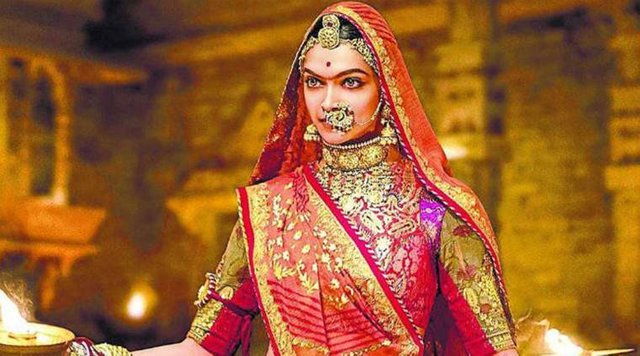Padmavati, India, Rani Padmini, Sanjay Leela Bhansali, Shri Rajput Karni Sena
Why exactly are the valorous men of Rajasthan furious? Going by the trailer of Padmavati — since that is all that Rajput honour will allow us to see — they don’t need to rush into battle with the rusting swords of Haldighati. All is well, surely, if Ranveer Singh can be transformed from sex god into a scruffy wild beast who snarls into his chicken tangri and sniffs a rose with a demented head-tilt. Here he is: The dangerous Muslim man paranoid Hindu parents have been warning their daughters about for 1,200 years, and — relief — he doesn’t look like Shah Rukh Khan.
But, as it turns out, even a film that promises to turn Alauddin Khilji into a cartoon barbarian and extols jauhar is bold enough to rile our freelance soldiers of hate and caste pride. The Shri Rajput Karni Sena has threatened Sanjay Leela Bhansali and Deepika Padukone with death and mutilation. At least four state governments have allowed these non-state actors to threaten a beheading or two with impunity. Indeed, this shameful spectacle over a woman who did not exist diverts us from the real issues.
For the women who exist, though, how is this not frightening? All disputes about history and myth are about the present. Nearly two centuries after sati was abolished, the myth of a woman who embraced death to protect medieval honour is being evangelised by an upper-caste establishment. Madhya Pradesh Chief Minister Shivraj Singh Chouhan has hailed her as “rashtramata Padmavati”, the mother of the nation.
The Kshatriyas have gone off the edge because the film might have shown Khilji fantasising about Padmavati. We need to see it for what it is: The violent assertion of a challenged Hindu masculinity masked as concern for a woman. In India today, the clan and the community are more powerful than the individual. We have seen the marriage of a 25-year-old annulled by a court because she was once Akhila and now Hadiya, who chose to marry a Muslim. In Kerala, again, Shruti Meledath was confined to a “reconversion centre” that coerces Hindu women who have relationships with men of other religions to “return” to the fold.
I would argue that the violent spectacle over Padmavati is also sending the Indian woman — and especially the Shrutis and the Hadiyas among us — a message. Don’t walk away too fast, we can yank you back into the16th century faster than you can spell sexual freedom. Thou shalt not desire a man from another religion, and how dare the covetous eyes of a Muslim man fall on you?
The chosen primetime anchors who watched the film and spoke in its favour reassured us about precisely this “chastity” of Bhansali’s film. There is not even a scene between Ranveer and Deepika, they say. Ergo, the great queen’s honour has not been sullied. Not even in the feverish imagination of a movie, we are assured, has a Muslim king set eyes on a Hindu queen.
This is not about Padmavati alone. Sanal Kumar Sasidharan’s film, S Durga, was first refused a CBFC certificate and dropped from the IFFI, without explanation. The ministry of information and broadcasting went to court to stop its screening. The film follows the journey of a Muslim man, Kabeer, and his Hindu girlfriend, Durga, on a road trip through misogynistic India. Make no mistake, the political imagination that has tarred all inter-faith love as “love jihad” is doubling down on all forms of expression and imagination. It is especially troubled by women’s sexual choices.
It is no surprise that this battle is being fought over cinema. For all its blindness to caste and worship of stalkers, Indian cinema, especially Bollywood, is a playground of desire. Pyaar kiya toh darna kya, it has taught generations of thwarted lovers. For the purveyors of honour, desire is always disruptive, always one step, and two dance numbers ahead of them.
Honour is bad news for the Indian woman. Many people have remarked on the irony of men fighting for Padmavati and threatening Deepika with bodily harm. But that is the very nature of patriarchal deception: It pretends to protect women when its agenda is to control and subjugate her, to decide who she can have a relationship with and whether she can board a bus alone to go to college. It pretends to place her on a pedestal and worship her, when it is building a wall, or maybe a pyre, around her.
In a country with a shocking record on gender equity, who is worried about the real-life Padmavatis? What of the Padmini struggling to be born in Rajasthan, a state with an appalling sex ratio? What of the girl who has managed to enter college, despite all the odds stacked against her? These flesh-and-blood women don’t need the protection of Kshatriyas. They need the right to health, equality and justice, which a feudal order has always denied them — and which a democratically-elected government owes them. They need the freedom to make their own sexual choices.
For these young women of India, Rani Padmavati is best left behind as a myth, mothballed and made obsolete. They have many more tales of courage to write.